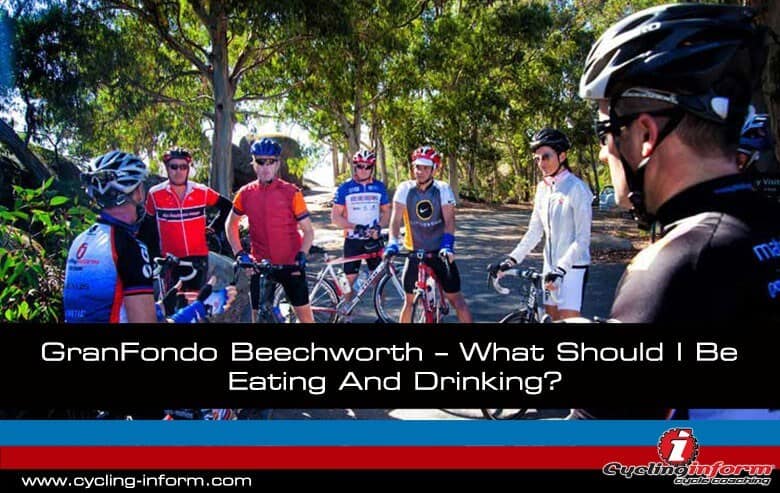A seasoned cyclist will have enough carbohydrate stored in their bodies to provide them with around one to two hours of high intensity cycling. Once the carbohydrate stores are depleted the cyclist then “bonks” or hits the wall. If you are riding at a more leisurely pace, then you’ll find that your carbohydrate stores will last longer than if you are riding at race pace.
There are two standard protocols for endurance sports nutrition. The 30-60 grams of carbohydrate per hour and the 1 gram per kg of body weight per hour. I recommend that you adopt the 30-60 grams of carbohydrate per hour nutritional protocol if you plan to ride at a leisurely but steady pace. If you plan to ride at a race pace, then the 1 gram of carbohydrate per kg of body weight per hour is a more suitable nutritional protocol to follow.
These carbohydrate requirements can be met by consuming a variety of combinations of sports drinks, sports bars and gels and normal food like fruit, ANZAC biscuits, fruit cake and sandwiches. I also recommend that the faster you go the more you’ll want to rely on products that are able to be consumed and digested quickly like sports drinks, gels and sports bars.
If you are ride more leisurely then you will have more time so you can choose “real” food to fuel you. Most products now have their carbohydrate content listed on the outside of the packet. This makes it relatively easy to work out how many of them you’ll need to eat per hour. Most gels and sports bars contain around 20-30 grams of carbohydrate so consuming two to three of these products per hour will generally meet the majority of most people needs.
Remember that these are guidelines only! As everyone has their own preference to the type of food they prefer to consume, I strongly recommend that you experiment to work out your nutritional requirements during your training leading up to the Gran Fondo Beechworth. Also, people with larger builds (heavier) consume more carbohydrate per hour than smaller (lighter) built people. Please take this into consideration when working out your nutrition plan.
Hydration Guidelines
The fluid you drink while riding is taken to replace water and electrolytes lost through perspiration. You also lose fluid when you breathe, but this is of lesser importance. The amount of fluid you consume will vary depending on how hot it is when you are riding and how much you perspire. The hotter the day and the more you perspire so the more fluids and electrolytes you’ll need to replace. Again, each individual has their own specific hydration needs, so it’s important to experiment while out riding until you find out what works for you.
Hydration can be complicated further because many people rely on the carbohydrate in the sports drinks to provide them with their fuel as well.
On cooler days, they may not be drinking enough of the sports drink to meet their 30-60 grams of carbohydrate per hour requirements. If this is the case then supplementing their sports drink with a snack will help. Drinking too much on a cooler day means you may need to go to the toilet more often to expel the extra water.
Also, on the hottest part of really hot days you may not be able to consume enough fluid that you lose. If you know that you are going to be riding through the middle part of a really hot day it’s important to ensure that to keep on top of your hydration earlier on in the ride.
By doing this, you’ll be less likely to run deeply into hydration deficit before the mid-day heat. Headaches are a sure sign that you are dehydrated.






Leave A Comment